
archives for 11/2019
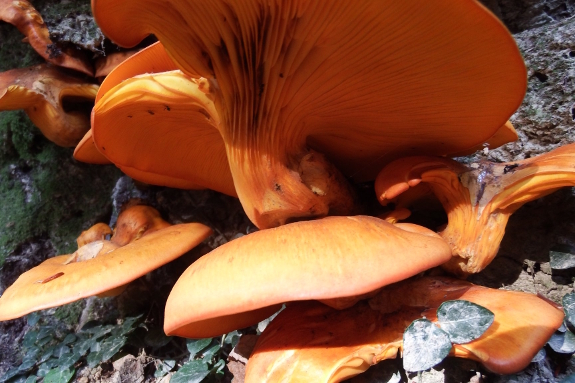
During the last month, we had a very late first frost (November 1),
rapidly followed by a freeze down into the teens. I went on a caving
adventure, Mark
learned to make movies on a hand-cranked, black-and-white, film camera,
and I published a new
werewolf novel.
But none of that is the topic of this post.
Instead, I want to talk more about --- fungi!
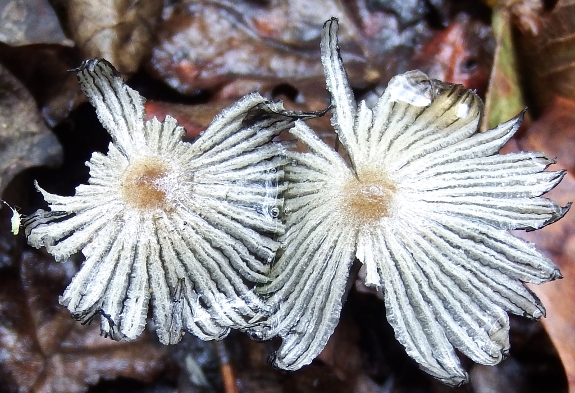
Fantastic Fungi
Mark and I just got back from a showing of the documentary Fantastic Fungi at the nearest
art-house theater. We both highly recommend you check this movie out!
The stunningly beautiful time-lapses alone were worth the price of
admission. But it was equally fascinating to hear Paul
Stamets speak about his life and work. (Michael Pollan, although
listed in the description, plays a much smaller role. There is also a
cameo appearance by Tradd
Cotter!)
I was a little uneasy about certain New Age/overly-poetic language. But
Mark felt like the subject matter merited the flourishes. The second
half also goes deep into psilocybin/consciousness/mental-health
experiments and theory, which was thought-provoking but may turn
certain members of the audience off. (I can't decide whether or not I'm
among that number.)
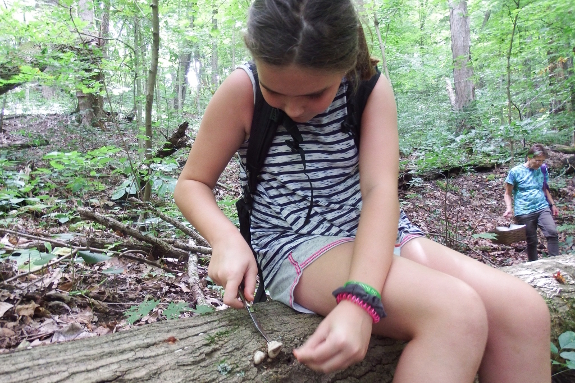
New Mushroom Field Guides
Of course, my feet remain firmly planted in the dirt, so I got just as
much out of the two new field guides I splurged on a couple of months
ago. When I experienced my first round of mycophilia two decades ago,
there were so few book choices out there that I was soon disappointed
by the fact many of the species I found weren't ID'able. Nowadays,
there are lots of local field guides that contain most of the species
in certain areas.
For our region, I settled on two new editions. First, Appalachian Mushrooms by Walter E.
Sturgeon feels like a (big but) traditional field guide. Species are
divided up by category with great images and descriptions.
In contrast, Mushrooms of the Midwest,
by Michael Kuo and Andrew S. Methven is a little denser and more
scientific (arranged alphabetically by scientific name), although still
with excellent photos and good descriptions.
The rule of thumb when identifying mushrooms you intend to eat is to
use at least two field guides for ID, preferably also begging backup
from a real, live person. Together, Appalachian
Mushrooms and Mushrooms of
the Midwest make me feel good about at least some of my IDs.
Obviously, I don't eat the ones I don't feel good about.
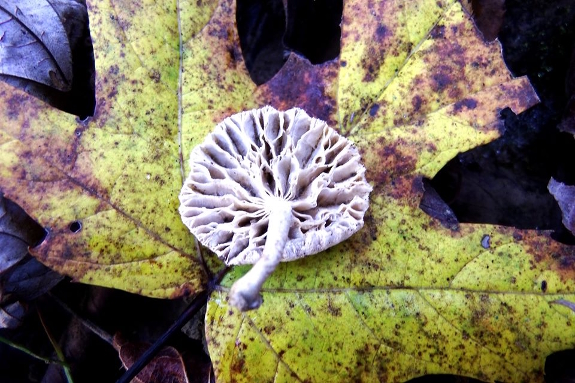
Mushroom ID Websites
Of course, you don't have to pay for books unless you want to. As I
think I mentioned in a previous post, iNaturalist is a great
social-media-style gathering place to share information about species
you find in the wild. Don't eat something just because someone on
iNaturalist tells you it's okay! But, beyond that caveat, you can learn
a lot by posting your tentative ID and waiting to see what others think.
A more field-guide-style website is MushroomExpert.com. This labor
of love is put together by one of the authors of Mushrooms of the Midwest, and it
has even more photos and species than Kuo included in his book.
Definitely worth a visit if you have an unknown fungus in your hands!
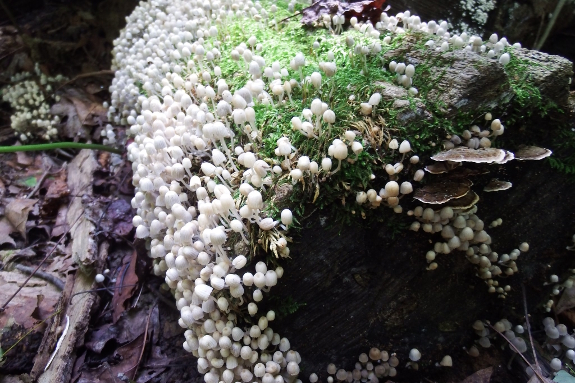
And that's probably about as much mushroom enthusiasm as you can handle
for one day. I hope you enjoyed the photos, which came from various
hikes over the last few months.
Want more in-depth information? Browse through our books.
Or explore more posts by date or by subject.
About us: Anna Hess and Mark Hamilton spent over a decade living self-sufficiently in the mountains of Virginia before moving north to start over from scratch in the foothills of Ohio. They've experimented with permaculture, no-till gardening, trailersteading, home-based microbusinesses and much more, writing about their adventures in both blogs and books.
